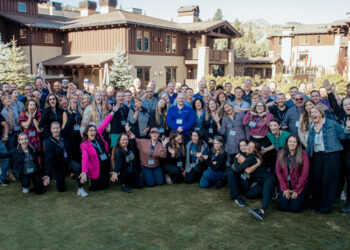Employing a diverse leadership team creates a space for new perspectives, skills and ideas from all different backgrounds.
According to Deloitte — an international professional services network headquartered in London, England — 74% of millennial employees believe their organization is more innovative when it has a culture of inclusion, and 47% actively look for diversity and inclusion when sizing up potential employers.
Additionally, having a diverse leadership team allows you to better serve your community.
“Health clubs service a wide variety of customers and clients,” said Allison Flatley, an industry consultant. “Research shows customers are attracted to businesses and clubs where they feel they fit in and there are people like them. Leaders in health clubs should be representative of your customers and clients.”
Jane Riddell, the president of GoodLife Fitness, echoed this.
“It’s so important to hire people who reflect the diversity and demographics of the communities where your clubs operate,” said Riddell. “At GoodLife, we aim to build a workforce that reflects the communities where we operate — from the top of the organization to the front line. To do that you need a diverse leadership team. Diverse leaders understand and prioritize diversity, equity and inclusion (DEI).”
Having diverse leadership also allows them to be more inclusive, welcoming and better at serving all employees. Flatley emphasized the importance of health clubs promoting and highlighting their diversity.
“It’s important for your staff to see people like themselves in leadership roles,” said Flatley. “It’s a great way to highlight and emphasize opportunity and advancement. Ongoing training and mentorship programs can also help to foster leadership diversity.”
Additionally, employing people from different backgrounds helps foster relationships between co-workers, members and clients — all who spend a lot of time inside the club’s walls.
“A diverse team makes our clubs more welcoming and inclusive,” explained Riddell. “Members want to spend more time there and employees become more engaged. Members are encouraged to join and work out more often and more consistently. Reaching more people with fitness is good for long-term health and wellness of the population overall and can even take the burden off the healthcare system.”
In order to achieve this, Flatley said she encourages health clubs to localize — adapt a product or service to meet the needs of a particular language, culture or desired population’s look-and-feel.
“Learn about your city, neighborhood and the people in it,” added Flatley. “A successfully localized service is one that appears to have been developed within and by the local culture. Localizing shows employees and customers you care enough to understand them and speak with them in ways they are most comfortable with. High-quality localization efforts have been demonstrated to boost retention rates of staff and customers. Music, humor, art and local stories are all examples of localization. Make diversity a goal.”
While leadership diversity needs to be an objective, Riddell added in order to achieve it you must operationalize it. She recommended making it part of your performance appraisals, planning templates, measurements and hiring practices, and to manage it diligently.
Overall, while pursuing a diverse leadership team, give yourself grace. It’s extremely important, but it’s not something you can successfully change overnight.
“Accept that building DEI in your organization is a journey,” said Riddell. “There will be bumps in the road and you’ll end up taking detours. Stay open with your heart and mind. It starts with training and awareness. Make sure you identify tools for measurement so you know you’re heading in the right direction. Keep listening to your people. React when you’re going off course.”










